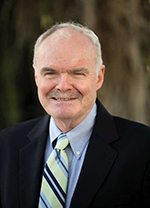The right track at last?

With all the commotion caused by the hurricane that wasn’t, but then became a disastrous storm, an interesting transportation story did not get a lot of notice. As Irene faked at Florida, then veered north to a place in New England history, The Palm Beach Post reported that some talks were going on between the Florida Department of Transportation and the Florida East Coast Railway about the possibility of the railroad taking over Tri-Rail.
The paper reported that it came as a shock to Tri-Rail’s board, which knew nothing of such discussions, and wasn’t very happy about what seemed some kind of sneak attack. An FEC official told us off the record that too much was made of a very preliminary approach to what could be a major transportation development for South Florida.
Whatever. The reality is that, after more than 20 years of a pretty good commuter train on the wrong track, there is serious effort to move Tri-Rail to the FEC tracks and overnight turn a marginally useful commuter service into a very valuable one which would not only serve many more workers but also holds promise of an economic charger for much of Florida’s east coast. The cities from Jacksonville south to Miami owe their locations primarily to the FEC. Its tracks bisect the business districts of every town along the route. The tracks Tri-Rail and Amtrak now use are on the more westerly CSX tracks, which miss the downtowns by just enough to make it an inconvenient commuter railroad.
Illustration: A commuter from Palm Beach County to Fort Lauderdale recently times a morning trip. It took about 32 minutes to travel the 19 miles from Boca Raton to the Tri-Rail station on Broward Blvd. Then it took almost exactly as much time waiting for a connecting bus, then crawling for 17 minutes for just one mile through morning rush hour traffic to the heart of the Fort Lauderdale office district, then another eight-minute walk to his office.
That Tri-Rail is on the wrong track was obvious from its inception. Ironically, it was forced to use the CSX tracks because at the time the FEC wanted no part of a commuter system. It had given up passenger trains in the 1960s and, with a busy freight railroad, wanted nothing that would interfere with their money-making mode. However, the railroad was sold and it has been apparent for several years that the new owner actually wants passenger traffic. Thus, Amtrak has been flirting with the idea of switching its long distance trains to the FEC. On paper that makes sense, for its track is a straight line along Florida’s east coast, whereas the present CSX track veers from Jacksonville to the middle of the state before returning to the coast in West Palm Beach.
The problem is that FEC’s track has many crossings, especially in the cities along its path. To have efficient Amtrak service, or Tri-Rail, that railroad needs extensive improvements. They would include, eventually, either a high bridge over the New River in Fort Lauderdale, or an expensive tunnel. In either case it would eliminate grade crossings that slow traffic on busy downtown streets. Therein lies opportunity, and the FEC certainly realizes it. A fast commuter service, with Amtrak as a bonus, would generate real estate development near every station. Air rights above the tracks would be valuable, just as they are in northern cities which long ago put railroads either up or down to avoid traffic. Long term, the economic benefits to South Florida, and the FEC, could be enormous.
Now, after years of staring at the obvious, it appears the 21st century is on the brink of happening.
